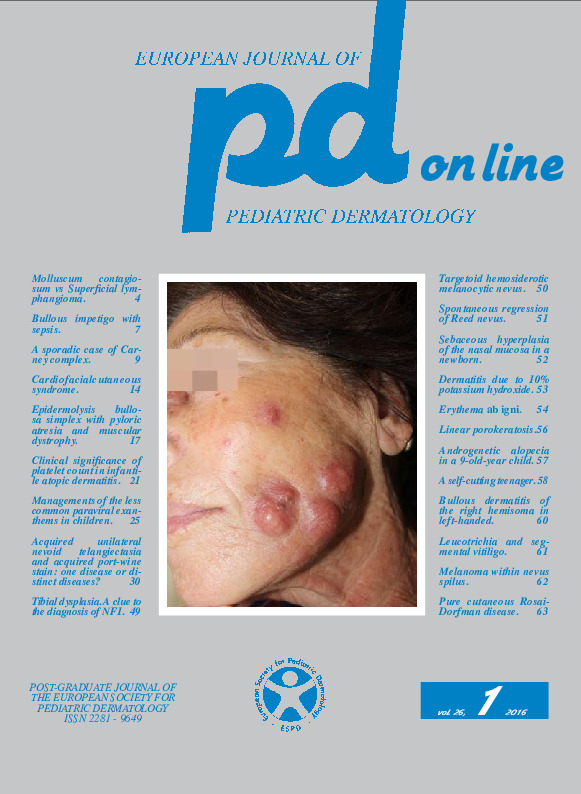Spitz-Reed nevus: natural history in children.
Downloads
DOI:
https://doi.org/10.26326/2281-9649.26.1.1195How to Cite
Caprio F., Tarantino G., Bonifazi E. 2016. Spitz-Reed nevus: natural history in children. Eur. J. Pediat. Dermatol. 26 (1): 51. 10.26326/2281-9649.26.1.1195.
pp. 51
Abstract
When in a prepuberal child a melanocytic proliferation is first observed due to its rapid growth, in the majority of cases we are dealing with a Spitz-Reed nevus (SRn), more rarely with a blue nevus. The natural history of the SRn, scarcely known because the nevus is usually removed, shows an initial growth phase for a period of 6-12 months, followed by a phase of involution that in the hypopigmented form can lead to the clinical disappearance of the nevus. The hyperpigmented SRn in the involution phase tends to flatten when raised; when already flat, it takes a more regular outline for the disappearance of peripheral pseudopods. Dermoscopically, the nevus from an early globular stage switches to a phase of pseudopodia, then of thin streaks till ultimately acquiring an appearance indistinguishable from a common melanocytic nevus, usually with homogeneous at the center and reticular at the periphery structure.Keywords
Spitz-Reed, melanocytic nevus, Regression

